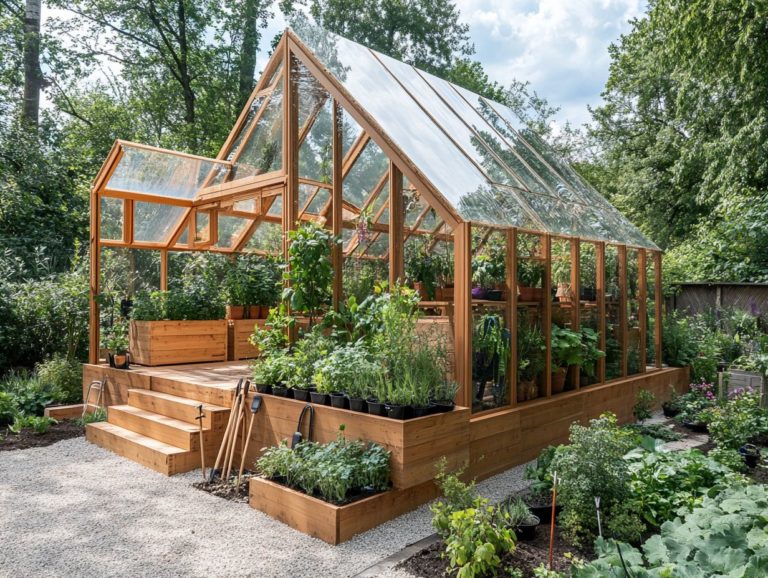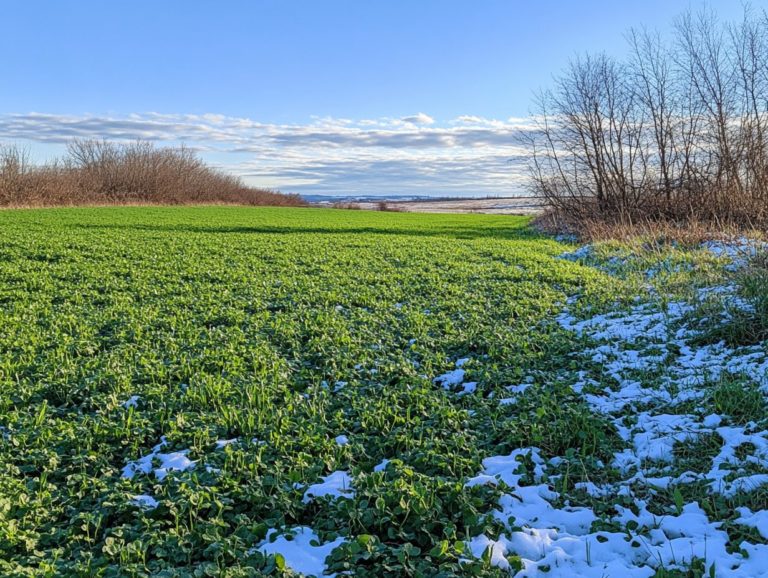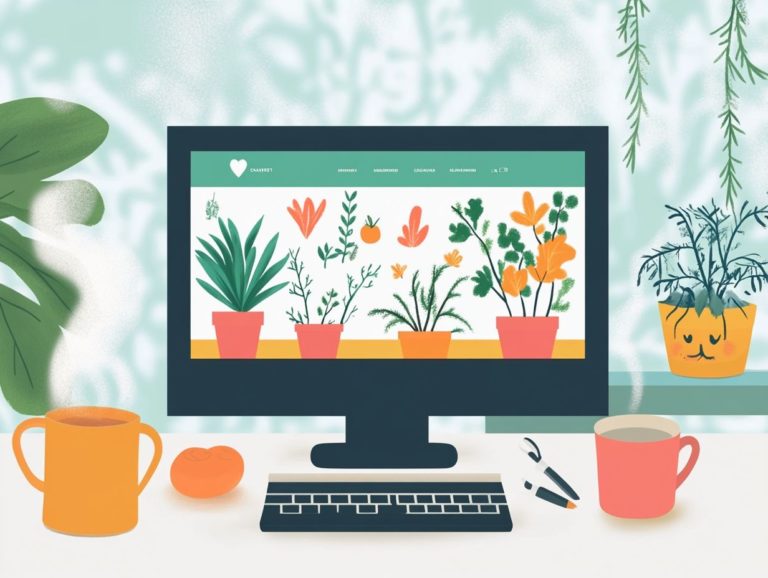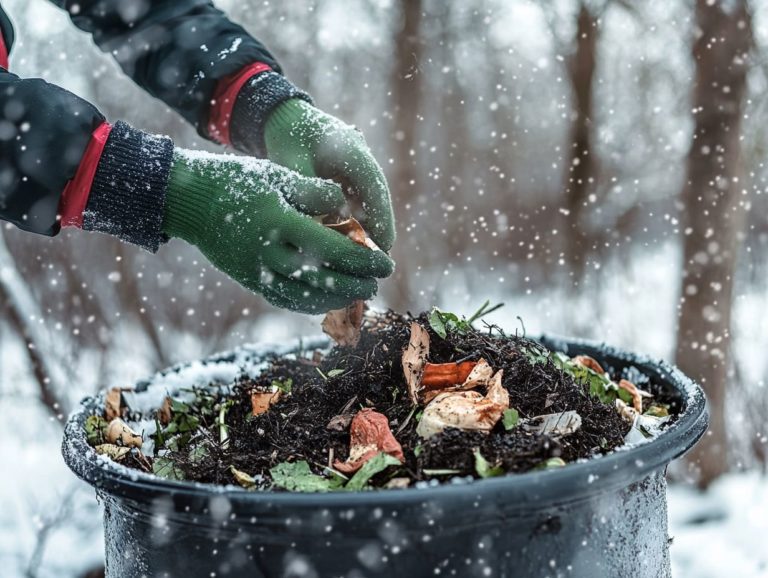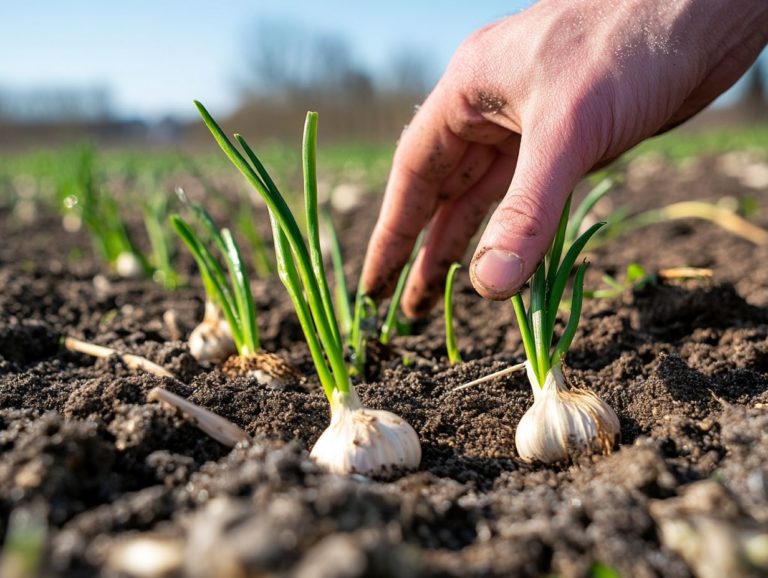How to Manage Watering in Cold-Climate Gardens?
Watering a garden in cold-weather climates presents unique challenges, but with the right knowledge, you can ensure your plants thrive even in frost-prone areas. Discover season extension techniques to help your garden flourish regardless of the chill!
This article delves into critical factors influencing watering needs and offers best practices for timing and frequency. It also examines various gardening methods and watering systems tailored for colder environments.
Learn about common water-related issues and innovative solutions, including alternative water sources like rainwater harvesting, essential for sustainable gardening.
Contents
- Key Takeaways:
- Understanding Watering in Cold-Climate Gardens
- Best Practices for Watering in Cold Climates
- Preventing Water-related Issues in Cold-Climate Gardens
- Alternative Water Sources for Cold-Climate Gardens
- Frequently Asked Questions
- How should I manage watering in my cold-weather garden?
- Should I water my garden during winter?
- How often should I water my garden during spring?
- What about watering during summer in cold-climate gardens?
- Is it better to hand-water or use a sprinkler system in cold-climate gardens, especially in greenhouses?
- What are some signs that my garden needs water? And how can I optimize my vegetable gardening?
Key Takeaways:

- Determine watering needs based on factors like climate, microclimates, soil type, and plant type.
- Water during the morning or early afternoon to prevent freezing at night. Use drip or soaker hoses for effective watering in cold climates.
- Prevent water-related problems by monitoring and adjusting watering frequency. Use mulch to retain soil moisture and consider alternative water sources like rainwater harvesting or indoor gardening systems to save water.
Understanding Watering in Cold-Climate Gardens
Understanding how to water in cold-climate gardens is essential for mastering winter gardening. For instance, preparing your cold-climate garden for rain can help address unique challenges that can impact the growth of hardy vegetables and the overall vitality of your gardens.
By grasping factors that influence watering needs like climate variations, soil moisture retention, and the application of season extension techniques such as cold frames and hoop houses you can significantly improve your ability to cultivate food during the chillier months.
Implementing proper watering practices nurtures plant health and promotes water savings, making your gardening endeavors sustainable and rewarding.
Factors Affecting Watering Needs
Several factors influence the watering needs of your cold-climate garden, including soil moisture levels, temperature fluctuations, and the specific hardy vegetables you choose to cultivate.
Understanding these elements is crucial for gardening success, especially with plants like carrots and kale. For example, sandy soils drain quickly, while clay retains moisture, directly affecting your watering schedule.
Seasonal changes add complexity during colder months, less frequent watering may be sufficient due to lower evaporation rates.
By emphasizing water conservation strategies, you can implement effective watering methods such as drip irrigation and mulch application to preserve soil health. These practices enhance plant growth and optimize your resources in a sustainable way.
Best Practices for Watering in Cold Climates
Implementing best practices for watering in cold climates is crucial for ensuring your vegetable gardens flourish amidst harsh weather. By mastering these techniques and understanding the key principles of cold-climate gardening, you can enjoy a rewarding winter gardening experience, allowing your plants to thrive.
Timing and Frequency
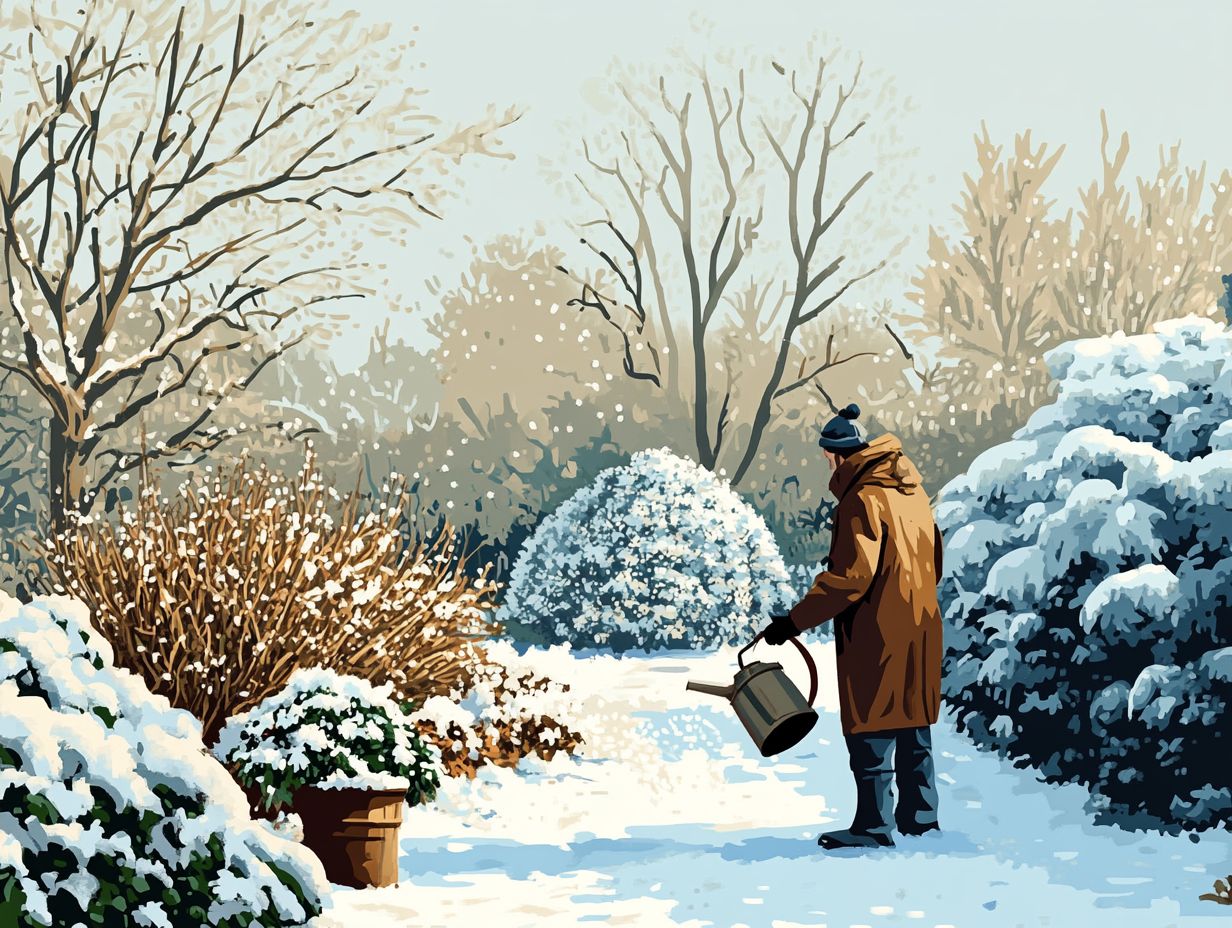
The timing and frequency of watering are critical to the health of your vegetables and the success of your gardening efforts. As a gardener, you must quickly adapt your strategies to the changing seasons and fluctuating temperatures.
For instance, during spring, when the soil retains moisture from melting snow, you may find it advantageous to reduce your watering frequency. As summer arrives and temperatures rise, staying vigilant about monitoring soil moisture levels becomes essential, especially for sensitive crops.
Spinach, which thrives in cooler conditions, may require less water compared to Swiss chard, which flourishes in warmer temperatures.
Thus, adjusting your watering methods based on each vegetable’s unique needs and prevailing environmental conditions is vital for optimizing both growth and yield.
Get ready to start your gardening journey and share your experiences with others!
Types of Watering Systems
There s a range of watering systems available for cold-climate gardens, each offering distinct advantages to enhance your gardening experience.
For instance, consider drip irrigation. It delivers water directly to the roots, minimizing waste and maximizing efficiency talk about a targeted approach for your cold frames and hoop houses!
If your garden is expansive, overhead sprinklers might be your best friend, effortlessly covering larger areas. For those with limited space, self-watering containers ensure your plants receive consistent moisture without the hassle of constant monitoring.
These systems easily integrate into structures like cold frames, hoop houses, and greenhouses, providing optimal moisture control essential for plant health in colder climates. By thoughtfully selecting the right watering method, you can cultivate a thriving environment that fosters growth.
Preventing water-related issues in cold-climate gardens is key to preserving your crops’ health and ensuring a bountiful harvest. This is particularly important when cultivating resilient vegetables like brassicas and carrots.
By prioritizing proper water management, you can ensure that your garden thrives even in challenging conditions.
Common Problems and Solutions
Common problems like soil over-saturation, poor drainage, and frozen hoses can be tough challenges for gardeners in cold-climate regions. Fortunately, effective solutions are at your fingertips to tackle these issues head-on.
To successfully address these challenges, certain gardening methods and techniques are essential. For example, incorporating raised beds greatly improves drainage. Elevating the soil above the frost line helps prevent water accumulation.
Selecting the right soil mix is equally crucial. A blend of compost and coarse materials like perlite enhances aeration and moisture retention, significantly reducing the risk of over-saturation.
For watering, consider using insulated hoses or heating cables to prevent freezing. This ensures your plants receive the moisture they need, even in frigid temperatures. By embracing these strategies, you can mitigate problems and cultivate a thriving garden, even in the harshest conditions.
Alternative Water Sources for Cold-Climate Gardens
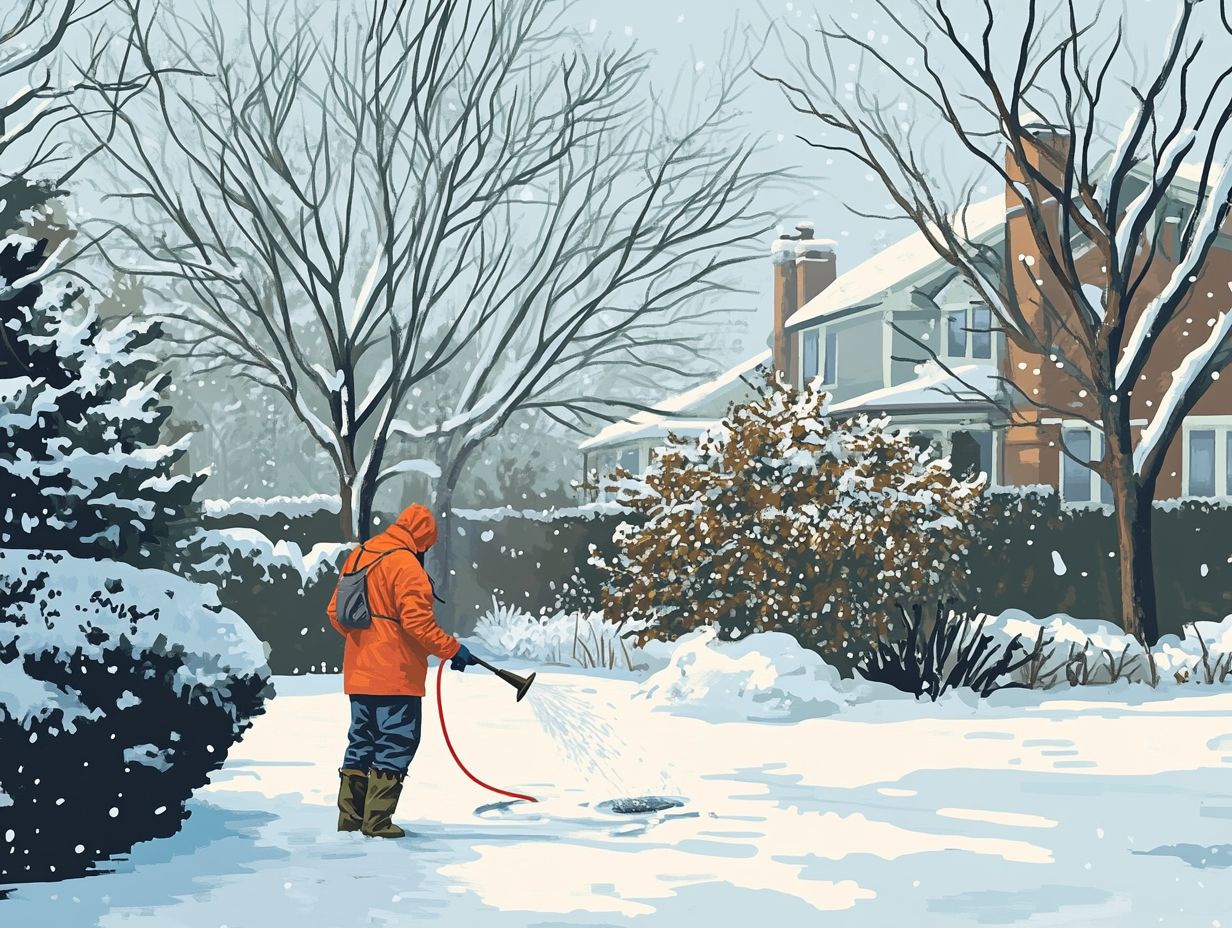
Exploring alternative water sources for cold-climate gardening provides you with sustainable solutions to keep your plants thriving while conserving precious resources during the harsh winter months. This approach not only ensures the health of your garden but also aligns with environmentally conscious practices, allowing you to nurture your green space even in challenging conditions.
Rainwater Harvesting and Other Options
Rainwater harvesting offers a practical and eco-friendly way to source water for your cold-climate garden, bringing numerous environmental benefits while promoting effective water conservation. By capturing and storing runoff from your roof, you gain access to a reliable water source, significantly reducing your dependence on municipal systems.
The advantages are plentiful: you’ll notice a decrease in your water bills, and you’ll contribute to alleviating stormwater runoff, which can lead to erosion and water pollution.
Additionally, integrating greywater systems using water from sinks and showers for irrigation provides another highly beneficial option for your garden.
Exploring methods like drip irrigation and using irrigation systems in your greenhouse can further enhance your water efficiency.
Collectively, these practices support sustainable gardening, making them essential for nurturing resilient and flourishing cold-climate gardens.
Frequently Asked Questions
How should I manage watering in my cold-weather garden?
Proper watering is crucial for your garden’s success in cold climates. To understand more about the specific issues you might face, check out the challenges of cold-climate gardening and adjust your watering practices based on the season to ensure plant health.
Start implementing these strategies today for a thriving garden!
Should I water my garden during winter?
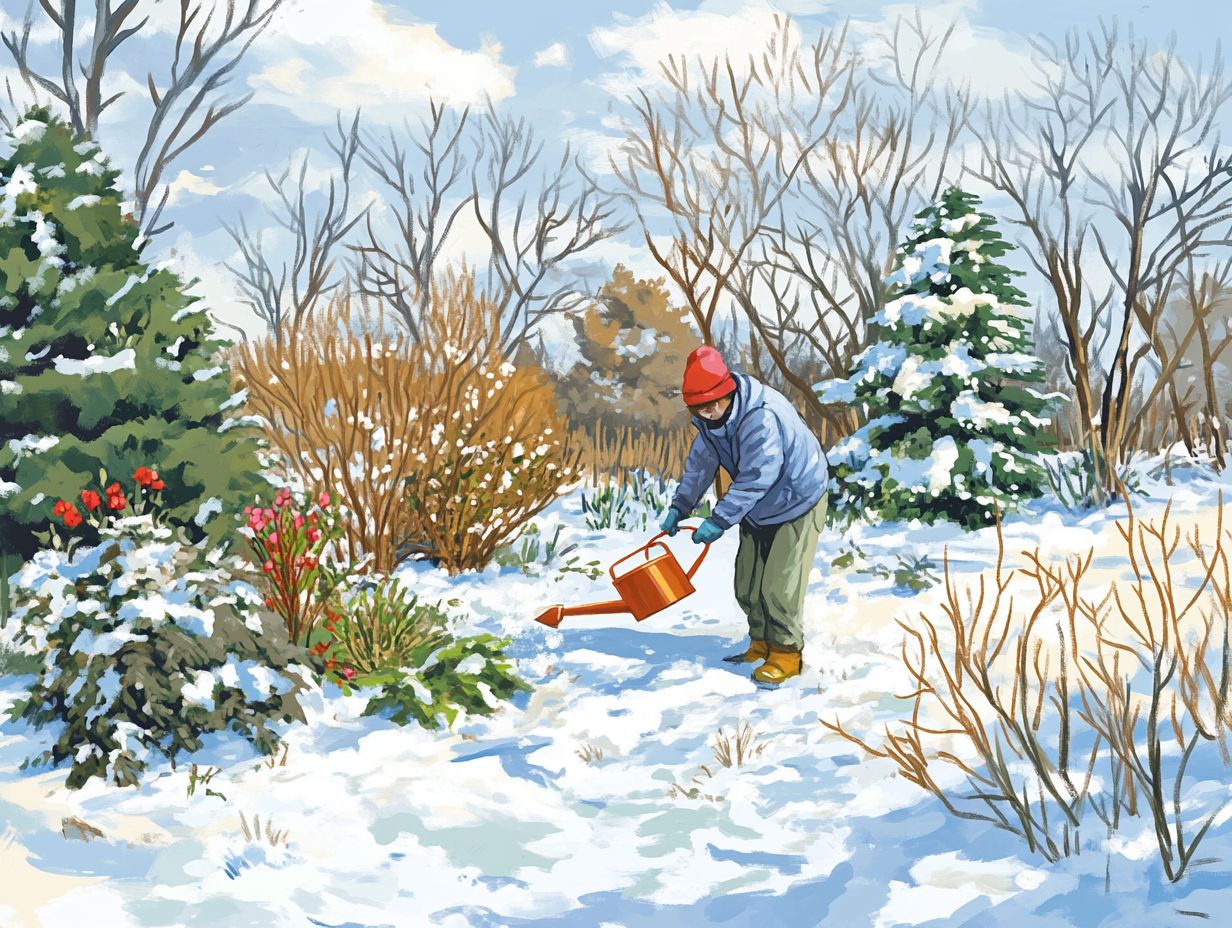
In most cases, you don’t need to water your garden in winter because the soil is usually frozen. If there is a long period without rain, make sure to water your garden, especially in cold frames, to keep the roots from drying out.
How often should I water my garden during spring?
Spring weather can be unpredictable. Generally, watering once or twice a week should be enough, but adjust based on rain or heat, especially for delicate crops.
What about watering during summer in cold-climate gardens?
Summer can bring hot, dry weather that dries out your vegetable garden quickly. Water deeply and less frequently in the morning or evening when the sun is less intense to help your plants thrive.
Is it better to hand-water or use a sprinkler system in cold-climate gardens, especially in greenhouses?
Hand-watering gives you more control over where and how much water you use. A sprinkler system can save time, but choose one that adjusts for different weather and plant needs.
What are some signs that my garden needs water? And how can I optimize my vegetable gardening?
Look for wilting leaves, dry soil, or slow growth. Always check how wet the soil is before you water to prevent overwatering, which can harm your plants.

